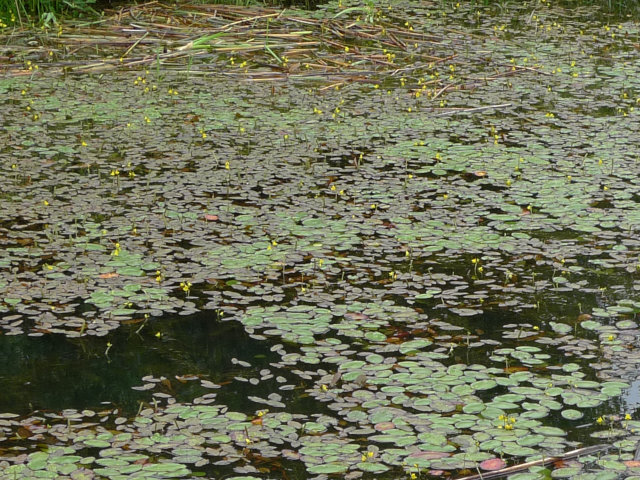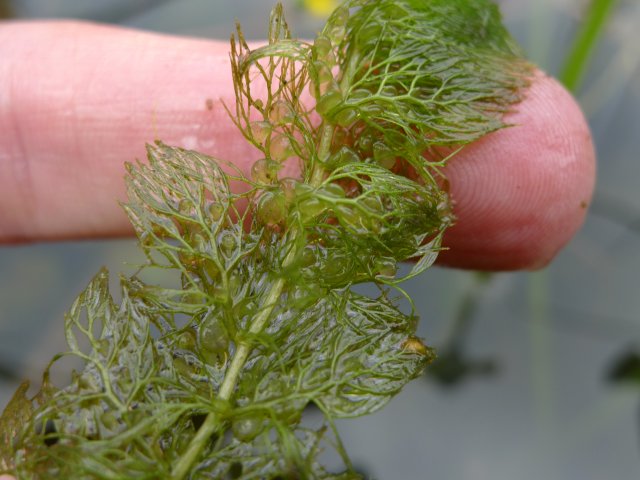Little Shop of Horrors Part III, Cordata Edition
Published at 19:57 on 14 June 2021
This is a post I was planning to make about a year ago, to complete the ones I made about two other native carnivorous plants of Whatcom County. I had a location all set with multiple herbarium records of it and everything.
I went there, and nothing. I searched for hours in vain. Either it was growing in a remote part of the lake in question, one which I could not readily access, or it had died out. Frustratingly, one of the records was for an easily-accessible dock area, where there were now none to be seen. I made a mental note to try again next year, then forgot about it.
Just this evening, while on a bike ride in my neighborhood, an photogenic clump of tule catch my eye. Hoping to get some shots of their flowers (which are not showy, but still are flowers, and which I have none of in my library of images), I notice something at the base of the clump:
 There are in fact quite a lot of them blooming across the surface of this little pond:
There are in fact quite a lot of them blooming across the surface of this little pond:
 This is the plant I was hoping to find last year, the Common Bladderwort (Utricularia vulgaris). Being an aquatic plant, the real action is happening below the surface (they sort of blend in with rest of the leaves, but look carefully, they are there):
This is the plant I was hoping to find last year, the Common Bladderwort (Utricularia vulgaris). Being an aquatic plant, the real action is happening below the surface (they sort of blend in with rest of the leaves, but look carefully, they are there):
 Here we see the bladder-like traps that give this plant its common name. They prey for the most part on zooplankton, and are some of the most rapidly-moving plant structures known, capable of acting in under a millisecond and subjecting their prey to forces of 600 G, approximately 200 times faster than the traps of the Venus Flytrap (that link contains a slow-motion close-up action shot of a bladderwort trap in action).
Here we see the bladder-like traps that give this plant its common name. They prey for the most part on zooplankton, and are some of the most rapidly-moving plant structures known, capable of acting in under a millisecond and subjecting their prey to forces of 600 G, approximately 200 times faster than the traps of the Venus Flytrap (that link contains a slow-motion close-up action shot of a bladderwort trap in action).
What a treat, finding these in my own neighborhood!

Wow this is amazing I did not know that about bladderwort. I really love these entries